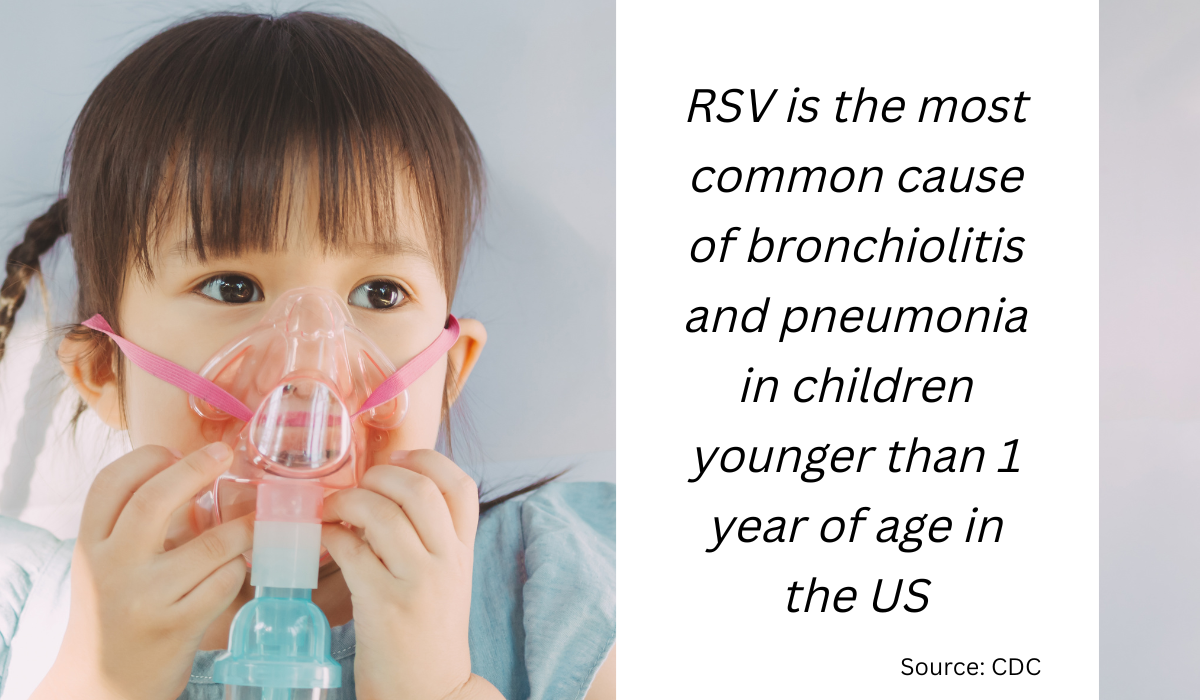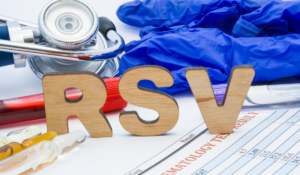Just like common flu and COVID-19, Respiratory Syncytial Virus [RSV] infection spreads rapidly during the fall and winter months.
So, what exactly, is RSV?
RSV is a common respiratory virus especially harmful to very young children, older adults, those born pre-term, and those with underlying respiratory conditions.
It is therefore important for employers, workers with children, and workers who interact with children, to learn about the prevention and spread of RSV.
Let’s take a look at some of the specifics, how it can affect your workplace, and most importantly, what you can do to prevent it.
Who Does Respiratory Syncytial Virus (RSV) Affect?
While RSV might not be as well-known as other viruses, like the flu or the common cold, it’s nonetheless incredibly common – especially in younger children.
In fact, it’s estimated that most children in the US are infected by RSV by the age of 2, with 64 million people infected annually, worldwide.
RSV spreads easily, especially in group settings like preschool or daycare. While most infections result in symptoms similar to a cold, RSV is also the most common cause of bronchiolitis and pneumonia in children younger than 1 year of age in the United States.
Even worse, it’s also responsible for the deaths of approx. 160,000 worldwide, every year.
This year, the rate of hospitalizations related to the virus began to increase during late spring, and continued to increase through the summer, and even into early fall.
Workers with children of their own, or even those who interact with children on a regular basis, should remain on high alert. Taking necessary steps to curb the spread will play a major part in keeping everyone safe.
Related: How to Protect Your Team From Monkeypox In the Workplace

Spread and Symptoms of RSV
Like many illnesses, RSV is spread through contact with droplets from the nose and throat of infected people through coughs or sneezes. RSV can also spread through dried respiratory secretions on clothes, beddings and other similar items. Further, RSV can even remain on hard surfaces for several hours, and on skin for shorter amounts of time.
Typically, symptoms are similar to that of common flu, and generally appear four to six days after exposure.
Symptoms generally develop slowly over a period of several days. The contagious period is usually less than 10 days after symptoms begin, but occasionally remain longer.
Symptoms, particularly a cough, may persist for a few days to a number of weeks. Other symptoms to watch out for are: runny nose, decrease in appetite, sneezing, fever, and / or wheezing.
If you or your child have symptoms consistent with the ones mentioned, or consistent with any other respiratory illness, contact a health care provider right away for help with diagnosis and care.
While sick, stay home from work and keep infected children away from school to prevent spreading the illness.
All final penalties must be paid, and the sites involved must have passed a follow-up or referral inspection, according to the directive.
Related Article: Don’t Overlook These Other Occupational Respiratory Illnesses
Preventative Measures to Help Stop the Spread at Your Workplace
To prevent the spread of the virus and other respiratory viruses that circulate during the fall and winter, including COVID-19 and flu, workers (especially parents and guardians) should make sure that they:
- Wash their hands frequently and thoroughly with soap and warm water or use an alcohol-based hand sanitizer.
- Cough or sneeze into the elbow, arm, or disposable tissue. If disposable tissue is used, use hand sanitizer or wash hands afterwards and the tissue disposed properly.
- Avoid touching your eyes, nose, and mouth.
- Stay away from people who are sick.
- Workers who have symptoms should be advised to stay home. Parents and caregivers should be encouraged to keep young children with acute respiratory illnesses out of childcare, even if they have a negative test for SARS-CoV-2.
- Individuals may return to work/school/childcare after symptoms have resolved including at least 24 hours passing since resolution of fever without the use of fever-reducing medications. Patients who test positive for SARS- CoV-2 should follow CDPH isolation guidance.
- Stay up to date with COVID-19 shots and receive an updated booster as soon as eligible.
- Get an annual flu shot.
- Wear a mask at work and in crowded places.
Key Takeaways
While most cases are mild to moderate, RSV still poses significant risks, and can lead to further complications like pneumonia.
And, while it generally affects children more than adults, if your employees have children of their own, they’ll likely need to take time off to care for them & isolate at home.
The best way to keep your team happy and healthy is through strong hygiene practices, and making sure workers who may be exposed safely at home.
*** About Worksite Medical
In most cases, OSHA requires medical surveillance testing, and at no cost to employees. Worksite Medical makes that program easier with mobile medical testing. We conduct on-site respirator fit tests, as well as audiometric exams, pulmonary function tests and heavy metal lab work, right on your job site. We also keep accurate, easy-to-access medical records for your convenience.
You’ll keep your employees at work, and stay ahead of OSHA inspections.




